The roles of children

Demon carrying off a child, from Geoffroy de LaTour Landry,
Le livre pour l'enseignement de ses filles (Basel, 1493)

CHILDREN AS WITCHES
The demonologists stressed how witches passed on their allegiance to Satan to their children. This is as true of the Malleus as it is of later texts, such as those of Rémy and Guazzo, both because their texts were dependent on Kramer's, to a considerable extent, and because this theme emerged from trial material. One might ask whether the enquiries of Boguet and Rémy created this material, or whether it was embedded in village culture. After all, an impoverished family who depended on charity, extracted with the occasional threat of harm, might well produce children in the same plight. The accusations of one generation would be cited as evidence in the following decades, so that a parent's condemnation would tell against the children. Indeed, that the parents had been condemned for the same crime was one of the strongest proofs, in the eyes of Rémy, who tells his readers that "there are daily examples of hereditary crime manifesting itself in the children."
Despite this, most jurisdictions in Europe did not put children on trial for witchcraft. There are stories passed among the demonologists but few in the archives, except in some particular times and places. Rémy tells of how his court at Nancy was in the custom of having witches' children "sentenced to be stripped and beaten with rods around the place where their parents were being burned alive", but he felt that this treatment was insufficiently severe. Bodin tells a tale, recounted by Admiral Coligny, concerning a young boy who had killed two gentlemen with magical powders and yet been absolved by the judges. It was difficult, the demonologists constantly complained, to get judges to set aside their usual assumption, that children were incapable of criminal guilt, in the case of this most threatening of crimes.
An exception appears to be Germany, where more than one series of child-witch trials took place. This appears to be connected with moral panics, on the part of the authorities, and fantasy on the part of the children. The literature on this subject is cited below.
In the literature of witchcraft, there was an emphasis on infanticide, with or without the mother's consent. This linked up with the fear of mothers concerning the health of their newborn children. The personal identity and self-worth of mothers was tied up with their productivity, both in the household economy and as producers of heirs to the family name. This was as important for peasant farmers, who wanted to hand on the farm and be supported in their old age, as it was for monarchs and aristocrats.
The tales of murderous witches in the art and literature
of witchcraft increasingly focused on the harm they could do to infants,
either before or after birth. The flesh of an unbaptised infant was
a staple ingredient in the witches' ointments and brews:
Finger of birth-strangled babe
Ditch-deliver'd by a drab,
Make the gruel thick and slab.
Add thereto a tiger's chaudron,
For th' ingredients of our cauldron.
Thus, it is unsurprising that demonological works and
the confessions of witches, feeding as they did on one another through
the mediation of popular pamphlets and the questions of interrogators,
should both dwell upon this most alarming feature of witches' activities,
so that attacks on the unborn, the newly born and the young feature widely
in trials and tracts. The printer to the Inquisition tribunal at
Logroño, Juan de Mongastón, after hearing the confessions
of the Basque witches in 1610, wrote that
"They suck the small children on the backside and the anus, pressing hard
with the hands, and sucking they often draw and suck their blood.
And with pins and needles they wound them in the temples and the top of
the head, and in the spine and other parts and limbs of the body.
And they suck their blood elsewhere, the Devil saying to them: 'Suck and
swallow that which is good for you.' After that the children die,
or remain ill for long. Sometimes the witches kill them later, pressing
with the hands and biting the throat until they asphyxiate them."
Of course, such stories could operate as a cover for for real ill-treatment of children, when used by accusers to evade their own parental responsibility. However, it would almost certainly be a mistake to use actual child abuse and infanticide as the explanation for all such accusations, as psychohistorians who follow Lloyd deMause are prone to do. These stories reflect what witches are expected to do, by accusers, by interrogators, and by confessing witches themselves. No actual behaviour or injuries would be required to produce such tales, and any slight injury might prompt an accusation along these lines, providing a suitable witch-figure was in the vicinity. Children themselves might produce such dramatic tales, either as self-dramatizing fantasy or as an explanation for an injury. All that was needed was for the stories to be credible within the culture concerned.
Diane Purkiss, among others, has focused on the anxieties of mothers who made accusations, especially concerning their children's alleged bewitchment. The figure of the witch, like other cultural constructs, is unstable, subject to reinterpreted and renegotiated identities. Women who initiated witchcraft accusations in early modern England pointed to disrupted household production processes such as spinning or dairy work as evidence of malign interference in the welfare of a domestic realm for which they were responsible. Childbirth and the subsequent lying-in period (as well as the concern by women for very young children) were also points of vulnerability. "Witch" and "witchcraft" acquired meanings in relation to women's responsibilities to protect their spaces and activities.
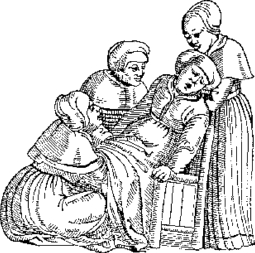 Historians
in regions where traditional childbirth is a forgotten institution are
often ill-equipped to understand what was happening in the early modern
birthing chamber. In consequence, they misread the accusations that
are occasionally associated with childbirth. It is important to remember
that childbirth was both private, in the sense that men (including the
husband) were excluded except when a surgeon was needed in a dire emergency,
and yet in some ways public, because the room would be crowded with women,
not only the mother and midwife but also various friends, relations and
neighbours who were invited to attend as trusted "gossips". This
word, derived from god-sibling, had yet to acquire its pejorative connotations
and referred to the women invited to accompany the mother in her travail.
Some would be there because of their close relationship to the mother,
some would be present because of their status in the community. They
might spend days, or even weeks, attending the mother in her room, which
would be closed off to protect against evil, whether in the form of demons
and witches or merely cold draughts. These groups of women, telling
stories round the fire in a closed room, were a veritable hothouse of the
women's culture. Mirrors would be covered and various rituals would
be undertaken to protect mother and child, although pious mothers and midwives
increasingly objected to these traditional practices. In New England,
the case of Elizabeth Morse is frequently cited as an example of a midwife-witch.
On closer inspection, it is clear that the accusation arose out of a refusal
to permit her to attend a birth, in the capacity of gossip. The bad
feeling thus engendered led to suspicion that she had cast a spell.
Historians
in regions where traditional childbirth is a forgotten institution are
often ill-equipped to understand what was happening in the early modern
birthing chamber. In consequence, they misread the accusations that
are occasionally associated with childbirth. It is important to remember
that childbirth was both private, in the sense that men (including the
husband) were excluded except when a surgeon was needed in a dire emergency,
and yet in some ways public, because the room would be crowded with women,
not only the mother and midwife but also various friends, relations and
neighbours who were invited to attend as trusted "gossips". This
word, derived from god-sibling, had yet to acquire its pejorative connotations
and referred to the women invited to accompany the mother in her travail.
Some would be there because of their close relationship to the mother,
some would be present because of their status in the community. They
might spend days, or even weeks, attending the mother in her room, which
would be closed off to protect against evil, whether in the form of demons
and witches or merely cold draughts. These groups of women, telling
stories round the fire in a closed room, were a veritable hothouse of the
women's culture. Mirrors would be covered and various rituals would
be undertaken to protect mother and child, although pious mothers and midwives
increasingly objected to these traditional practices. In New England,
the case of Elizabeth Morse is frequently cited as an example of a midwife-witch.
On closer inspection, it is clear that the accusation arose out of a refusal
to permit her to attend a birth, in the capacity of gossip. The bad
feeling thus engendered led to suspicion that she had cast a spell.
In a Virginia case, a midwife was accused, unusually, after she had been refused employment by the mother-to-be, because she was left-handed. There are also cases of midwives being accused in Scotland, but this derives not from injury to the mother or child. There was a local belief that midwives could transfer the pains of childbirth to a third party, with sometimes fatal effects. As a general rule, however, students should not accept the word of historians about the identity as midwife in the case of accused witches. This is usually mythical. The classic example is Anne Hutchinson, of Boston and later Rhode Island. She was certainly regarded as a troublesome heretic, but the very frequent repetition that she was a midwife accused of witchcraft does not make either half of this assertion actually true.
OLDER CHILDREN AS ACCUSERS
Where we do find large numbers of children involved in cases throughout Europe is as the bewitched accusers of witches. This is most famously the case in the Salem trials, although the youth of many of the accusers is often exaggerated by historians referring to them as "girls". The group of children from Salem Village, whose use of divination and subsequent fits started the panic, disappeared from the case fairly early on. However, there are earlier cases in New England that centrally involved children or young women going into fits and naming their persecutor in strange voices. These cases appear to have influenced one another, by being published. The same kind of intertextuality seems to have occurred earlier in England, with the case of the Throckmorton children influencing subsequent cases.
Some historians have simply taken this as evidence that all the children concerned were malicious frauds. This seems a little excessive. It may well be that most of the children really believed themselves to be afflicted, and that their fear would heighten whatever symptoms they exhibited. Moreover, the presentation of symptoms in any disease is an interactive process, with relatives and doctors helping the patient to make sense of the phenomena. This will lead to relevant symptoms being highlighted. In the case of psychological afflictions, this is very much the case. Consequently, the prior reading of similar cases by the adults involved could have been the crucial factor reinforcing the exhibition of stereotypical symptoms, rather than any conscious fraud. It might also be the case that the knowledge that the exhibition of precisely such symptoms was what would be required to secure a prosecution, thus lifting the witch's control, might have encouraged the afflicted to exhibit the expected symptoms. As with any disease, a sick role entails the production of appropriate conduct on the part of the patient. Finally, the role of those reporting the conduct of the afflicted needs to be considered. Pamphlets in particular have a tendency to reproduce one another in order to fulfil readers' expectations.
Be that as it may, there were certainly plenty of people willing to identify afflicted children and young women as frauds. Jacobean England saw a series of such "unmaskings", with James I taking an active role in the discovery of fraudulent boys and girls. Historians have generally taken the side of the sceptics, since they "know" there is no such thing as witchcraft. However, this does not seem an especially useful way of understanding the dynamics of the cases, since nobody at the time had such knowledge. They were rather uncertain that the case in front of them was genuine. Much the same kinds of social process went into making a confession of fraud as went into making an accusation of bewitchment, except that the presence of the King or his advisors could load the scales significantly. Those contemporaries who diagnosed fraud had political axes to grind just as did those who insisted on the genuineness of the affliction.
John Webster, in his
Displaying
of Supposed Witchcraft (1677), considered the Elizabethan cases associated
with the Darrel-Harsnet controversy, some of which concerned children,
and he repeated the story of the "Boy of Bilson", Thomas Cocks, whose alleged
fraud was uncovered in 1620 by Thomas Morton, Bishop of Coventry and Lichfield:
"This Boy
being about thirteen years old (but for wit and subtilty far exceeding
his age) was thought by divers to be possessed of the Devil, and bewitched,
by reason of many strange fits and much distemper, wherewith he seemed
to have been extreamly affected. In those fits he appeared both deaf and
blind, writhing his mouth aside, continually groaning and panting, and
(although often pinched with mens fingers, pricked with Needles, tickled
on his sides, and once whipped with a Rod, besides other the like extremities)
yet could he not be discerned by either shrieking or shrinking to bewray
the least passion or feeling. Out of his fits he took (as might be thought)
no sustenance which he could digest, but together with it, did void and
cast out of his mouth, rags, thred, straw, crooked pins, &c. Both in
and out of his fits his belly (by wilful and continual abstinence defrauding
his own Guts) was almost as flat as his back, besides, his throat was swoln
and hard, his tongue stiff and rolled up towards the roof of his mouth,
insomuch that he seemed always dumb, save that he would speak once in a
Fortnight or three Weeks,and that but in very few words. Two things there
were which gave most just cause of presumption that he was possessed and
bewitched; one was that he could still discern when that Woman (which was
supposed to have bewitched him) to wit Jone Cocke was brought in to any
room where he was, although she were secretly conveyed thither, as was
one time tryed before the Grand Jury at Stafford: The second, that though
he would abide other passages of Scripture, yet he could not indure the
repeating of that Text, viz. in the beginning was the word, &c. Jo.
1. ver. 1. but instantly rolling his eyes and shaking his head, as one
distracted, he would fall into his usual fits of groaning, panting, distraction,
&c. In which plight he continued many months, to the great wonder and
astonishment of thousands."
Webster also discusses two Lancashire examples of children giving false evidence, one from his own experience. Webster disbelieved all such stories, but an intelligent reader who believed in the reality of the phenomena in some cases, such as Increase Mather, who cited Webster, might simply take his material as evidence of the need for extreme care.
Some examples of primary sources concerning child accusers: the Throckmorton children and the Warboys witches, 1593; Thomas Darling of Burton, 1597 (several pamphlets); the Mary Glover case; the Lancashire witches of 1612; William Perry, the boy of Bilson, 1622; the Renfrew case of 1696-7 (3 pamphlets).
OLDER CHILDREN AS POSSESSED DEMONIACS
Such cases, of children going into convulsions and claiming to be tormented by a witch, could easily go wrong for the accuser. If the child was not from a family of significantly higher status than the accused, or the child had a reputation for impiety, the case could be rapidly transformed into a diagnosis of direct demonic possession. A bewitched person was taken as being an innocent victim, except insofar as God's providence might be sending the affliction for some reason, as in any other disease or misfortune. A directly possessed person, on the other hand, must have entered into a relationship with the Devil, initially of their own volition, even if control had subsequently been lost. The bewitched person had only lost control of the soul, because God would not allow the immortal soul to be affected by the wiles of a witch, and could consequently testify in court. A possessed person was speaking with the voice of the Devil, having lost control of the soul, and could not be trusted to speak the truth. Thus the switch from a diagnosis of bewitchment to one of possession had many serious consequences. This happened in the case of Marthe Brossier in France, at the end of the sixteenth century, and also in the case of the "Surey demoniac" in Lancashire, at the end of the seventeenth century. There are, in fact, very few cases of direct possession that do not appear to have started out as witchcraft accusations, and these usually occurred in instances of exceptionally pious adults becoming convinced that they were damned. However, not all contemporaries were especially clear on the distinction and sometimes there were tactical reasons why the distinction should be blurred, in order to secure an important conviction. It should be noted, however, that contemporaries were usually clearer about the implications of the distinction than historians have usually proved to be.
BIBLIOGRAPHICAL NOTES
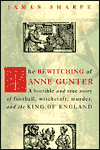 ENGLISH
WITCHCRAFT CASES, especially during the late Elizabethan and early
Jacobean periods, frequently involved seriously bewitched children as the
accusers. James Sharpe's recent book, The Bewitching of Anne Gunter,
deals with a girl who was apparently trained by her father into making
an accusation of bewitchment. Her case collapsed when she was taken
to London for investigation, on the orders of James I, but Sharpe is perhaps
a little too quick to assume that the later statements, admissions of fraud,
were true whereas the earlier accusations were false. Both sets of
statements were constrained by social pressures. By the time he wrote
this book, Sharpe was beginning to notice the distinction between bewitchment
and possession, but he sometimes lapses. This is a much more closely grained
reading of a case than is found in D.P.Walker's Unclean Spirits,
which discusses similar cases from France and England, but both authors
take sides in the debate and cannot treat all the material evenhandedly.
Also important is Michael MacDonald's commentary on, and reprinting of,
the primary material from the Mary Glover case, in his Witchcraft and
Hysteria in Elizabethan London. It should, however, be noted
that even MacDonald refers to Mary Glover as "possessed", which virtually
nobody at the time did.
ENGLISH
WITCHCRAFT CASES, especially during the late Elizabethan and early
Jacobean periods, frequently involved seriously bewitched children as the
accusers. James Sharpe's recent book, The Bewitching of Anne Gunter,
deals with a girl who was apparently trained by her father into making
an accusation of bewitchment. Her case collapsed when she was taken
to London for investigation, on the orders of James I, but Sharpe is perhaps
a little too quick to assume that the later statements, admissions of fraud,
were true whereas the earlier accusations were false. Both sets of
statements were constrained by social pressures. By the time he wrote
this book, Sharpe was beginning to notice the distinction between bewitchment
and possession, but he sometimes lapses. This is a much more closely grained
reading of a case than is found in D.P.Walker's Unclean Spirits,
which discusses similar cases from France and England, but both authors
take sides in the debate and cannot treat all the material evenhandedly.
Also important is Michael MacDonald's commentary on, and reprinting of,
the primary material from the Mary Glover case, in his Witchcraft and
Hysteria in Elizabethan London. It should, however, be noted
that even MacDonald refers to Mary Glover as "possessed", which virtually
nobody at the time did.
For an interesting case study, see Diane Purkiss, "Invasions: prophecy and bewitchment in the case of Margaret Muschamp", Tulsa Studies in Women's Literature 17 (1998) 235-253.
James Sharpe, "Disruption in the well-ordered household: age, authority and possessed young people", in Paul Griffiths et al., eds. The Experience of Authority in Early Modern England (New York, 1996) 187-212
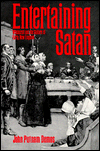
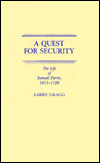
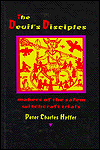 NEW
ENGLAND CASES notoriously involved young women and children, but
John Demos, in his Entertaining Satan, discusses the psychology
of the pre-Salem cases in New England, several of which involved children
or young servants. Larry Gragg, in A Quest for Security, discusses
the outbreak of the Salem panic, among the children of Salem Village and
the household of the Rev.Samuel Parris. Peter Charles Hoffer, in
The
Devil's Disciples, depicts the afflicted accusers in the Salem case
as a "girl gang", although this view rather underestimates the age of the
accusers, as the original group of young girls faded from sight fairly
early in the proceedings.
NEW
ENGLAND CASES notoriously involved young women and children, but
John Demos, in his Entertaining Satan, discusses the psychology
of the pre-Salem cases in New England, several of which involved children
or young servants. Larry Gragg, in A Quest for Security, discusses
the outbreak of the Salem panic, among the children of Salem Village and
the household of the Rev.Samuel Parris. Peter Charles Hoffer, in
The
Devil's Disciples, depicts the afflicted accusers in the Salem case
as a "girl gang", although this view rather underestimates the age of the
accusers, as the original group of young girls faded from sight fairly
early in the proceedings.
GERMAN CHILD-WITCHES
The subject of children as accused witches has attracted particular attention among historians of Germany, where the phenomenon appears to be connected with moral panics. The level of fantasy in such cases, and those where children and young people were the accusers, also appears to have undermined the credibility of the offence itself, to some extent, as perhaps it did it England and New England. Three books by Hartwig Weber are especially relevant, although we do not have them at ND Library, unfortunately. However, some recent articles are well worth consulting.
Hartwig Weber, Kinderhexenprozesse (Frankfurt am Main, 1991)
Hartwig Weber, "Von der verführten Kinder Zauberei: Hexenprozesse gegen Kinder im alten Württemberg (Sigmaringen, 1996 )
Hartwig Weber, Die besessenen Kinder: Teufelsglaube und Exorzismus in der Geschichte der Kindheit (Stuttgart, 1999)
Robert S. Walinski-Kiehl, "The Devil's children: child witch-trials in early modern Germany", Continuity and Change 11 (1996) 171-189
Lyndal Roper, " 'Evil imaginings and fantasies': child-witches and the end of the witch-craze", Past & Present 167 (2000) 107-139
James Sharpe, "Disruption in the well-ordered household: age, authority and possessed young people", in Paul Griffiths et al., eds. The Experience of Authority in Early Modern England (New York, 1996) 187-212
Wolfgang Behringer, "Kinderhexenprozesse. Zur Rolle von Kindern in der Geschichte der Hexenverfolgungen", Zeitschrift für Historische Forschung 16 (1989) 31-47
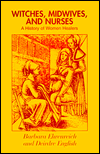
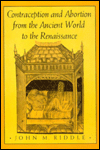
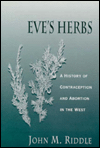 CHILDBIRTH
AND CHILD-REARING clearly had something to do with many witchcraft
accusations by parents, but the widely cited theory of Barbara Ehrenreich
and Deidre English, that the Church and the medical profession were campaigning
against midwives, is not now accepted among professional historians of
witchcraft or medicine. The theory does not match up with any significant
numbers of midwives prosecuted or with the conviction of historians that
most cases were motivated by accusations from below rather than policies
directed from above. It can still be found in the writings of John
Riddle on contraception and in books (in German) and articles by Heinsohn
and Steiger, as well as a few people who cite these sources and the utterances
of partisan amateurs of various kinds. More promising is the suggestion
of Lyndal Roper that lying-in maids, rather than wet nurses or midwives,
were vulnerable in Augsburg. In her admittedly small sample, witchcraft
accusations were made by young women who had recently given birth, against
elderly women, who frequently were responsible for caring for infants.
These accusations suggest deep antagonism between women and ambivalent
feelings about motherhood. A new mother's anxieties about her child and
her ability to feed it were projected on an infertile older woman, who
was seen as envious because she was poor and single. Although the
same pattern has not yet been found elsewhere, this focuses attention on
the anxieties associated with child-rearing, a point picked up by James
Sharpe and Diane Purkiss. The increasing concentration in the literature
and imagery of witchcraft on children as the victims of cannibalistic witches
may also have played a role.
CHILDBIRTH
AND CHILD-REARING clearly had something to do with many witchcraft
accusations by parents, but the widely cited theory of Barbara Ehrenreich
and Deidre English, that the Church and the medical profession were campaigning
against midwives, is not now accepted among professional historians of
witchcraft or medicine. The theory does not match up with any significant
numbers of midwives prosecuted or with the conviction of historians that
most cases were motivated by accusations from below rather than policies
directed from above. It can still be found in the writings of John
Riddle on contraception and in books (in German) and articles by Heinsohn
and Steiger, as well as a few people who cite these sources and the utterances
of partisan amateurs of various kinds. More promising is the suggestion
of Lyndal Roper that lying-in maids, rather than wet nurses or midwives,
were vulnerable in Augsburg. In her admittedly small sample, witchcraft
accusations were made by young women who had recently given birth, against
elderly women, who frequently were responsible for caring for infants.
These accusations suggest deep antagonism between women and ambivalent
feelings about motherhood. A new mother's anxieties about her child and
her ability to feed it were projected on an infertile older woman, who
was seen as envious because she was poor and single. Although the
same pattern has not yet been found elsewhere, this focuses attention on
the anxieties associated with child-rearing, a point picked up by James
Sharpe and Diane Purkiss. The increasing concentration in the literature
and imagery of witchcraft on children as the victims of cannibalistic witches
may also have played a role.
David Harley, "Historians as demonologists: the myth of the midwife-witch", Social History of Medicine 3 (1990) 1-26
Jane P. Davidson, "The myth of the persecuted female healer", Journal of the Rocky Mountain Medieval and Renaissance Association 14 (1993) 115-129
Gunnar Heinsohn and Otto Steiger, "Birth Control: The Political-Economic Rationale behind Jean Bodin's Démonomanie", History of Political Economy 31 (1999) 423-448
See also my unpublished "Witches, midwives, and Jean Bodin's rationality: an examination of the Heinsohn-Steiger thesis"
Lyndal Roper, "Witchcraft and fantasy in early modern Germany", History Workshop Journal 32 (1991) 19-43 [this important essay is also in her Oedipus and the Devil, and in Jonathan Barry et al., eds., Witchcraft in Early Modern Europe]
J.A.Sharpe, "Witchcraft and women in seventeenth-century England: some Northern evidence", Continuity and Change 6 (1991) 179-199
Diane Purkiss, "Women's stories of witchcraft in early modern England: the house, the body, the child", Gender & History 7 (1995) 408-432
Charles Zika, "Cannibalism and witchcraft in early modern Europe: reading the visual images", History Workshop Journal 44 (1997) 77-105
ANNE BOLEYN
It has been suggested that Anne Boleyn was suspected of witchcraft and adultery because she bore a deformed foetus. This view has been disputed.
Retha M. Warnicke, "Sexual heresy at the court of Henry VIII", Historical Journal 30 (1987) 247-268
G.W.Bernard, "The fall of Anne Boleyn", English Historical
Review 106 (1991) 584-610
Index